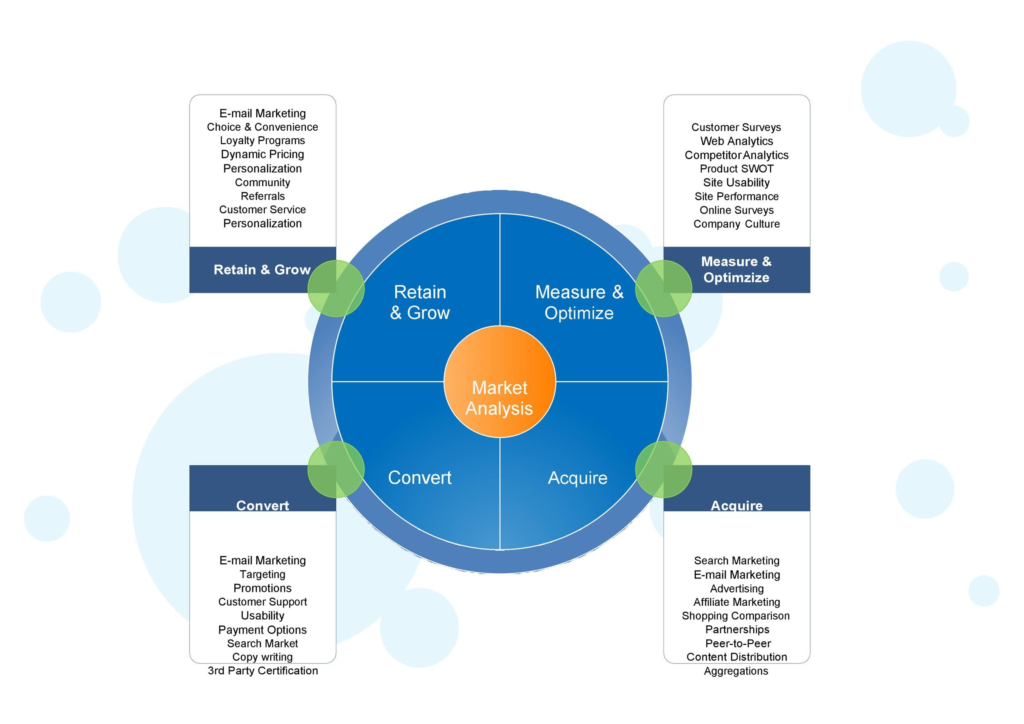Introduction to Company Analysis
When it comes to achieving business success, one of the key factors that cannot be ignored is company analysis. In simple terms, company analysis refers to the process of evaluating and assessing a company’s performance, financial health, market position, and overall strategic direction. It provides valuable insights that can guide decision-making and help businesses stay ahead in a highly competitive landscape.
Why is Company Analysis Important?
Understanding the importance of company analysis is crucial for any business looking to thrive in today’s dynamic market. By conducting a thorough analysis of a company, its strengths, weaknesses, opportunities, and threats can be identified. This knowledge empowers businesses to make informed decisions about their strategies, investments, and resource allocation.
Through company analysis, businesses gain a comprehensive understanding of their competitors, industry trends, and market dynamics. This knowledge allows them to identify untapped opportunities and potential areas of growth. Furthermore, by closely monitoring their own performance and financial health, companies can proactively address any issues or challenges that may arise.

Key Components of Company Analysis
A successful company analysis comprises several key components that provide a holistic view of the organization. These components include:
- Financial Analysis: This involves a thorough examination of a company’s financial statements, such as income statements, balance sheets, and cash flow statements. Financial analysis helps determine a company’s profitability, liquidity, solvency, and efficiency.
- Market Analysis: This component focuses on analyzing the company’s target market, industry trends, customer behavior, and competitive landscape. Market analysis helps businesses understand their position in the market and identify opportunities for growth.
- SWOT Analysis: SWOT stands for Strengths, Weaknesses, Opportunities, and Threats. Conducting a SWOT analysis allows businesses to identify their internal strengths and weaknesses, as well as external opportunities and threats. This analysis provides a clear understanding of the company’s competitive advantage and areas that need improvement.
- Competitor Analysis: This component involves studying the strategies, strengths, weaknesses, and market positioning of competitors. By understanding their competitors, businesses can identify areas where they can differentiate themselves and gain a competitive edge.
- Strategic Analysis: Strategic analysis involves evaluating a company’s overall strategic direction, goals, and objectives. This component helps businesses assess whether their current strategies align with their long-term vision and make necessary adjustments if required.
Tools and Techniques for Conducting Company Analysis
To conduct an effective company analysis, businesses can leverage various tools and techniques. Some of the commonly used tools include:

- Financial Ratio Analysis: This tool helps assess a company’s financial performance by analyzing key ratios, such as profitability ratios, liquidity ratios, and solvency ratios. Financial ratio analysis provides insights into a company’s financial health and helps identify areas of improvement.
- Porter’s Five Forces Analysis: This framework helps evaluate the competitive forces within an industry, including the threat of new entrants, bargaining power of buyers and suppliers, threat of substitutes, and intensity of competitive rivalry. Porter’s Five Forces Analysis provides a comprehensive understanding of the industry dynamics and helps businesses develop effective strategies.
- PESTEL Analysis: PESTEL stands for Political, Economic, Social, Technological, Environmental, and Legal factors. Conducting a PESTEL analysis helps businesses understand the external factors that may impact their operations and strategies. This analysis enables businesses to anticipate potential challenges and adapt their strategies accordingly.
- SWOT Analysis: As mentioned earlier, SWOT analysis is a powerful tool for assessing a company’s internal strengths and weaknesses, as well as external opportunities and threats. By conducting a SWOT analysis, businesses can identify areas where they need to capitalize on their strengths and mitigate potential risks.
- Competitor Benchmarking: This technique involves comparing a company’s performance, strategies, and market position against its competitors. By benchmarking against competitors, businesses can identify areas where they are lagging and develop strategies to outperform them.
The Role of Company Analysis in Strategic Decision-Making
Company analysis plays a critical role in strategic decision-making. It provides businesses with the necessary insights and information to make informed decisions about their future direction. By conducting a thorough analysis of the company’s internal and external environment, businesses can identify their strengths, weaknesses, opportunities, and threats. This knowledge enables businesses to develop strategies that leverage their strengths, address their weaknesses, capitalize on opportunities, and mitigate potential risks.
Strategic decision-making involves setting goals, formulating strategies, allocating resources, and evaluating performance. Company analysis provides the foundation for each of these steps. It helps businesses set realistic and achievable goals based on their current capabilities and market conditions. It also guides the formulation of strategies that align with the company’s long-term vision and competitive advantage.
Furthermore, company analysis helps businesses allocate their resources effectively. By understanding their financial health, market position, and growth potential, businesses can allocate their resources – whether it be financial, human, or technological – in a way that maximizes their return on investment.
Lastly, company analysis enables businesses to continuously evaluate their performance and make necessary adjustments. By regularly monitoring their financial performance, market position, and customer satisfaction, businesses can identify areas where they are excelling and areas that need improvement. This ongoing evaluation allows businesses to adapt their strategies and stay ahead in a rapidly changing business landscape.

Case Studies of Successful Company Analysis
To truly understand the power of company analysis, let’s explore a few case studies where it has played a pivotal role in driving business success.
Case Study 1: Apple Inc.
Apple Inc. is a prime example of a company that has leveraged the power of company analysis to achieve remarkable success. Through a combination of financial analysis, market analysis, and competitor analysis, Apple has been able to identify and capitalize on emerging trends in the technology industry.
By closely monitoring its financial performance and market trends, Apple identified the growing demand for smartphones and tablets. This insight led to the development of game-changing products like the iPhone and iPad, which revolutionized the technology industry.
Furthermore, by conducting competitor analysis, Apple was able to differentiate itself from its competitors. The analysis revealed that while other companies focused on features and specifications, Apple’s competitive advantage lay in its user-friendly interface and seamless integration across its products. This unique selling proposition helped Apple dominate the market and become one of the most valuable companies in the world.
Case Study 2: Amazon.com Inc.

Amazon.com Inc. is another company that has harnessed the power of company analysis to drive its success. Through in-depth market analysis and strategic analysis, Amazon identified the untapped potential of e-commerce and became a pioneer in the industry.
By analyzing the market dynamics and consumer behavior, Amazon recognized the growing trend of online shopping. The company capitalized on this trend by developing a user-friendly platform, offering a wide range of products, and providing excellent customer service. This customer-centric approach propelled Amazon to become the e-commerce giant it is today.
Furthermore, through strategic analysis, Amazon continuously assesses its long-term goals and adjusts its strategies accordingly. The company’s commitment to innovation and customer satisfaction has allowed it to expand its offerings beyond e-commerce, entering industries such as cloud computing and streaming services.
These case studies highlight how company analysis can uncover valuable insights that drive strategic decisions and ultimately lead to business success.
Common Challenges in Conducting Company Analysis
While company analysis offers immense benefits, it is not without its challenges. Here are some common challenges that businesses may encounter when conducting company analysis:
- Data Availability: Gathering reliable and accurate data can be a challenge, especially for smaller businesses or those operating in industries with limited data sources. Businesses may need to invest in data collection and analysis tools or seek external assistance to overcome this challenge.
- Industry Complexity: Some industries, such as healthcare or technology, can be highly complex, making it challenging to analyze all relevant factors. Businesses may need to rely on industry experts or specialized consultants to ensure a comprehensive analysis.
- Subjectivity: Company analysis involves interpreting data and making judgments based on the available information. This subjectivity can introduce biases or errors in the analysis. It is important for businesses to approach analysis with objectivity and consider multiple perspectives.
- Changing Market Conditions: Market conditions can change rapidly, making it essential for businesses to continuously update their analysis. Failing to adapt to changing market conditions can lead to missed opportunities or ineffective strategies.
- Resource Constraints: Conducting a thorough company analysis requires time, expertise, and resources. Small businesses or those with limited resources may struggle to allocate sufficient resources to conduct a comprehensive analysis. In such cases, businesses can prioritize key components of analysis and seek external assistance if needed.
Despite these challenges, the benefits of company analysis far outweigh the difficulties. By investing in company analysis, businesses can gain a competitive advantage, identify growth opportunities, and make informed decisions that drive long-term success.
Company Analysis in Different Industries

Company analysis is a valuable tool that can be applied across various industries. While the specific methods and techniques may vary, the underlying principles of analyzing a company’s performance, financial health, and market position remain consistent.
Let’s explore how company analysis is applied in different industries:
- Retail Industry: In the retail industry, company analysis focuses on assessing a company’s sales performance, customer satisfaction, inventory management, and pricing strategies. It also involves analyzing the competitive landscape, market trends, and consumer behavior. This analysis helps retailers identify areas for improvement, optimize their product offerings, and enhance the customer experience.
- Financial Services Industry: In the financial services industry, company analysis involves evaluating a company’s financial stability, risk management practices, and compliance with regulatory requirements. It also includes analyzing market trends, customer preferences, and competitive positioning. This analysis helps financial institutions identify opportunities for growth, manage risks effectively, and enhance customer trust.
- Technology Industry: In the technology industry, company analysis focuses on assessing a company’s innovation capabilities, product portfolio, and intellectual property. It also involves analyzing market trends, customer preferences, and competitive positioning. This analysis helps technology companies identify emerging technologies, develop competitive strategies, and stay ahead in a rapidly evolving industry.
- Healthcare Industry: In the healthcare industry, company analysis involves evaluating a company’s product pipeline, research and development capabilities, and regulatory compliance. It also includes analyzing market trends, patient demographics, and competitive positioning. This analysis helps healthcare companies identify unmet medical needs, develop innovative solutions, and deliver better patient outcomes.
These are just a few examples of how company analysis is applied in different industries. Regardless of the industry, conducting a thorough analysis of a company’s performance, financial health, and market position is crucial for driving business success.
Company Analysis Resources and Recommended Reading
To further enhance your understanding of company analysis, here are some recommended resources and reading materials:
- Books:
- “Security Analysis” by Benjamin Graham and David Dodd
- “Competitive Strategy: Techniques for Analyzing Industries and Competitors” by Michael E. Porter
- “Financial Statement Analysis and Security Valuation” by Stephen H. Penman
- “The Art of Company Valuation and Financial Statement Analysis” by Nicolas Schmidlin and Matthias M. Müller
- “Strategic Management: Concepts and Cases” by Fred R. David and Forest R. David
- Websites and Online Resources:
- Investopedia (www.investopedia.com)
- Harvard Business Review (hbr.org)
- Financial Times (www.ft.com)
- Bloomberg (www.bloomberg.com)
- McKinsey & Company Insights (www.mckinsey.com/insights)
These resources provide a wealth of knowledge and insights into company analysis, financial analysis, strategic management, and industry trends. They serve as valuable references for businesses and professionals seeking to enhance their company analysis capabilities.